Get Outside and Play Month

Five Things to Do Inside Fairytale Town
1. See how long it takes you to walk the Crooked Mile.
2. Climb through Sherwood Forest, and balance on the jousting beam.
3. Find a feather.
4. Do ten nimble jumping jacks by Jack’s Candlesticks.
5. Skip across the Mother Goose Stage.
Five Things to Do Outside Fairytale Town in Land Park
1. Find a brick with only the letter A on the Yellow Brick Road. (Hint: It’s near the beginning.)
2. Stroll through the WPA Rock Garden.
3. Count how many different birds you see at the pond.
4. Run across the soccer field.
5. Sing a song on the amphitheater stage.
It doesn’t matter what you decide to do, just get outside and play!
PTA’s Work for the Arts
March was Arts Education Month, and the California State Parent Teacher Associations and the California County Superintendents Educational Services Association Arts Initiative celebrated with a gathering of State, Regional and Parent Arts Education Leaders.
The PTA has played an integral role in bringing the arts to students throughout the County. Often it is only through PTA funding and involvement that children are introduced to art – in all its forms. I know that my own children had wonderful education in the arts in their public school thanks to the involvement of an active PTA.
On hand to express their appreciation to the PTA for their support of the arts were folks from the California County Superintendents Educational Services Association, the Assembly Committee on Arts, the Office of the State Superintendent of Public Instruction, the California Arts Council, and parent arts education leaders.
The highlight of the gathering was when the Bret Harte Elementary School Choir performed. They received a standing ovation. The children in the choir were engaged, focused, and articulate – as well as talented. They provided positive proof that arts education works for kids. Thanks to the PTA, they have it.
US Play Coalition Conference

Highlights of the conference include:
– Fraser Brown – Dr. Brown is a playwork professor at Leeds University in England. He also led a team of play workers to Romania to work with orphans between the ages of 2 and 8 who had been tied to their cribs their entire lives. Incredibly sad circumstances, incredibly important work, and incredibly positive results. Fraser’s team used play to help the children gain physical and communication skills and an increased sense of trust and belonging.
– The Chinese Delegation – History was made when the US Coalition and the Minister of Health from Shanghai signed an MOU to declare their cooperation in promoting play. It’s an international movement!
– Dr. Bernard Griesemer, Pediatrician – The American Association of Pediatrics recently declared “active play is so central to child development it should be included in the very definition of childhood.” Dr. Griesemer supported their proclamation with staggering statistics. Children today have a shorter life expectancy than their parents – a historical first. He believes one of the reasons for the current epidemics childhood obesity and diabetes is lack of active play. He emphasized that playworkers are allied health professionals as they advocate for children to get the kind of play they need. That’s right, play is a public health benefit!
– Mapping of Play Deserts by KaBoom! – The industrious playground installer, KaBoom!, has a new initiative – to map out the play deserts in the U.S. Play deserts are areas that have no playground or play resources within easy walking distance. It will be fascinating to see where the deserts in Sacramento are.
Everything else about the conference was great too, from the people planning it to those who presented and attended. We all left excited to be part of a movement to promote play, and reassured that play is, indeed, essential to human development.
Adventure Play in Berkeley
I was so inspired by the Adventure Playgrounds I saw in London that I continue to learn as much about them as I can.
There are about 1,000 Adventure Playgrounds in the world. Most of them are in Europe. Germany has the most with 400.
There are two in the United States: one in Berkeley near the Marina, and one in Huntington Beach.
One weekend I took a jaunt to the Berkeley Adventure Playground for a look-see. As usual, I heard it before I saw it. Children laughing, hammers pounding, music wafting. And when I got there it looked just like… an Adventure Playground! There were piles of lumber and higgledy-piggledy structures that children were hammering and painting on. There was a zip line that let children fly through the air (just a couple of feet off the ground) before landing (crashing) into a pile of sand. There were some broken down pianos that kids were banging on and strumming (yes they were that broken down). There was a hill bordered with old tires than kids rolled down in hand-me-down mini-jeeps. There was a garden area, a painting area, a shop to get hammers and nails (you had to turn in three old nails to get one), and a quiet area. Kids and parents alike were having a blast playing.
And that’s what the difference was. There were parents! In the UK, Adventure Playgrounds are free and pretty much for kids alone – with a few adults as facilitators (or playworkers as they are called there). At Berkeley, use of the playground was free for children as long as an adult was with them. If a child was dropped off alone, there was a per-hour charge.
No matter, it was wonderful to see an Adventure Playground on US soil – parents or not! Now all we need to do is build a few in Sacramento! Where would you build an Adventure Playground?
Re-Entry
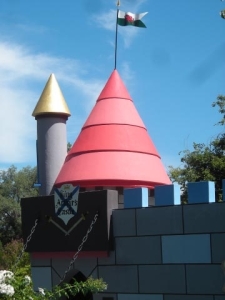
We got home just before Christmas so we were able to do all the family traditions and activities. Lights on the house, tree trimming, food extravaganzas… the usual. I had a week to recover from the holidays before I returned to work on January 3.
As I walked into Fairytale Town, its magical charm took over as usual. The Castle, Shoe Slide, Crooked Mile, Sherwood Forest, Stages, and Gardens looked the same as they did before I left – minus the tree leaves. The animal menagerie was the same as well, only a bit fuller with their winter coats.
The board of directors and staff were a bit leaner than when I left. Two Board Members completed their maximum nine years of service, and our Staff is typically smaller during the slower winter months. Other than that, they too were the same as when I left. A little tired after a long and busy year (our highest attended year in recent history!), but still dedicated to our mission of promoting the imagination, creativity and education of children – and working hard to make sure we provide meaningful experiences for our community.
And that, I realized, is the magic of Fairytale Town. Brilliant, dedicated people working hard for a common goal: to provide children and families with opportunities to spend time together in imaginative play.

The Wisdom of Flight Attendants

Access to Culture – Part 2
Public transportation makes it possible to get to all of the cultural activities London offers. It runs pretty much 24/7 – with the occasional strike and shut down of course.
I was able to get everywhere I needed to go on public transportation. Museums, playgrounds, markets, movies, theatres, restaurants, lectures, concerts, cathedrals… you name it, I could get there by bus or tube (the London underground).
Public transportation is good for other reasons.
It’s great for physical activity. Yes, even though you’re riding somewhere, you have to walk to get to the bus stop or tube station, perhaps not far, but farther than the driveway or parking lot. (I am happy to say I lost 10 pounds from this alone. I am sad to say my sedentary ways are now taking their toll.)
In my humble opinion, in addition to creating a more mobile environment, it also creates a more literate community. When you have to sit (or stand) for at least an hour a day people use that time to read. In fact, newspapers are handed out to people during the morning and evening rush hours. It is amazing to see people holding a book, magazine or newspaper in one hand – and turning the pages – as they hold on to handrails with the other.
Finally, public transportation is good for families. It allows older children to get places without having to be carted about by their parents. This gives much more freedom to both the child and the parent. And, of course, you don’t have to worry so much about drivers under the influence…
It cost me about $40 a week for a public transportation pass to get pretty much anywhere I wanted to go. I spend at least that much a week on my car if I include gas, maintenance and insurance.
In addition to getting around in the city, I could take public transportation to other cities and countries pretty easily and cheaply also. I was able to get to Halifax, Leeds, Oxford, Staffordshire, Great Missendon, Portsmouth and South Hampton in England, as well as Ireland, Scotland, Slovenia and France.
The ability for people from all walks of life to get pretty much anywhere they want to go with out driving is an amazing thing. In my mind, public transportation is what makes a world class city.
Access to Culture – Part 1
Like its playgrounds, museums in London are busy places buzzing with visitors and activities. In my opinion, there are at least two reasons that they are so central to every day life: free admission and public transportation.
Being trained to get the maximum value for the dollar, I was excited about free admission to museums because of the “savings” I was getting. I soon realized there were other benefits as well. When I did go a museum, I could spend time looking at one gallery or even one piece of art because I knew I could go back again and again to see the other galleries and art. One afternoon I popped into the British Museum just to see the netsuke (Japanese carvings) they had on display. A few days later I went back and spent a few hours with the Elgin Marbles. And one afternoon when it was unusually slow, I was able get close to the exhibit of the Rosetta Stone which is usually mobbed with crowds.
Because I had no financial ‘risk,’ I also found that I went to museums I would normally not visit, which opened my horizons. I am not a big fan of interior design, but because it was free, I visited the Geffrey Museum and enjoyed looking at ‘family rooms’ from different eras. It gave me sense of history from a different perspective, and made me appreciate the comforts of home.
Obviously, on a personal level I greatly appreciated and took advantage of the free admission to museums and cultural attractions. However, the most important aspect of the free admission is the public benefit.
Whenever I went to a museum it was busy – full of tourists, yes, but also locals and students. The tourists crowded in during regular operating hours. The locals took advantage of the late nights and special programs offered. Classes of young students sat on the floor in front of paintings to learn about subject matter, art genres, and history from museum educators. Older students – from teenagers to senior citizens – could be found sketching copies of the great masters or taking notes on design trends, science discoveries or archeological finds.
Visiting museums is much like playing together in a playground. When people play together ‘common experiences’ are created. When we play together – whether on a playground or in a museum – we learn how to work together. And when people work together amazing things can be accomplished. Public transportation being one of them. But more on that later.
Full of the Dickens!
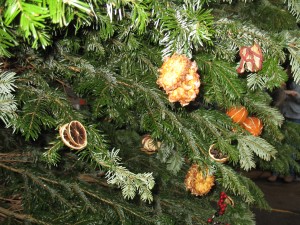
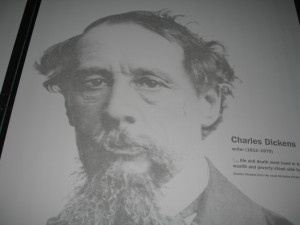
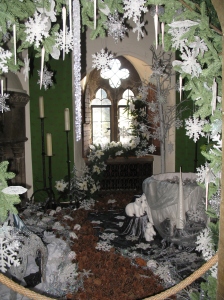
May your holiday celebrations be full of the Dickens – with family, friends, generosity, fun, games, and merriment!
Holiday Cheer
I felt like I was in ‘Who-ville’ earlier this evening.
I walked up the hill with some neighbors to Highgate Village for the annual Carols night. Just as in The Grinch Who Stole Christmas, all the villagers (and other neighbors close enough to walk) gathered at the town square and sang together. The local school band and choir accompanied and led the crowd of several hundred in the songs. And everyone sang! Buckets were passed along for donations to the local hospital. Everyone gave! There was no Christmas tree, no presents and no roast beast — just family, friends and neighbors singing together on a cold winter’s night. It was a great way to get into the spirit of the season.
People have been asking me about the holiday traditions I have seen here, and so far this is my favorite one. I understand that gatherings like this occur in many towns across England, and in other neighborhoods in London.
Of course there are a few other traditions I’ve noticed…
German Markets are common sites during the holidays. The markets have rows of booths with all kinds of goods to sell – from gloves and scarves to preserves and perfumes. Food booths offer hearty German fare to eat while wandering the stalls. You can also buy cheeses, nuts, breads, wines and savories to take home. The Markets have nice lighting display — simple but magical. It is amazing to a weather-wimpy Californian, but they stay open in the cold and rain.
Winter Wonderland in Hyde Park appears to offer the largest Christmas Market in town. In addition to the usual fare and lighting displays, it has a bunch of carnival rides and an ice skating rink. They too are open rain or shine. Outdoor ice skating rinks are another winter tradition. There are rinks all over town. Many are next to museums and palaces which adds to their magic.
Holiday lights here are different than at home. Like home, all the big shopping streets have large and lovely light displays and store fronts, and many squares and small shopping areas are lit as well. Unlike home, very few homes have outdoor lights. You will see decorations and Christmas trees in homes, offices and restaurants but, except for the shopping streets, decorations are more simple and subdued in general.
I guess it’s no big surprise that the holidays seem a little less commercial over here than at home. Perhaps the surprise is that so many of the traditions and activities take place outdoors. It is a nice way to welcome and celebrate the winter season. And it’s a nice way to learn what it’s like to be a ‘Who’.








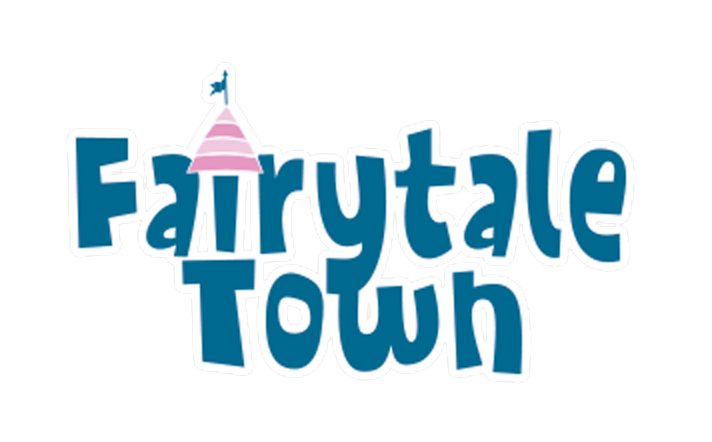
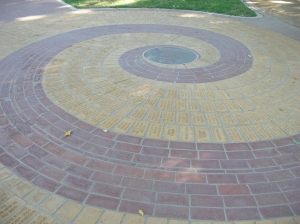

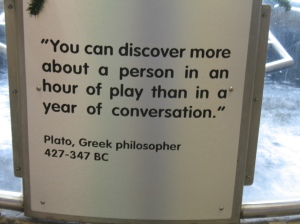
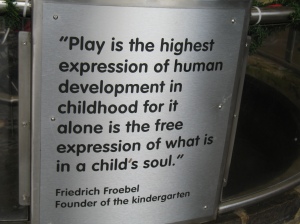
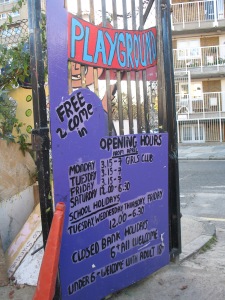

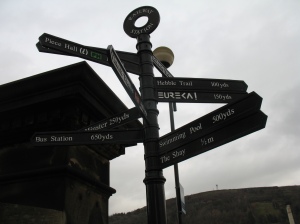




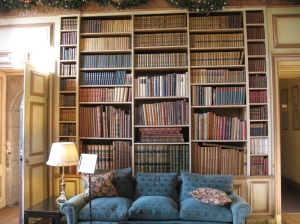


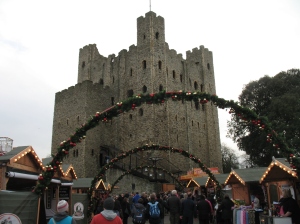
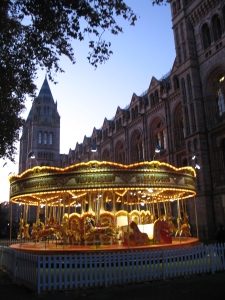
![163[1]](http://theworkofplay.files.wordpress.com/2011/12/1631.jpg?w=225)